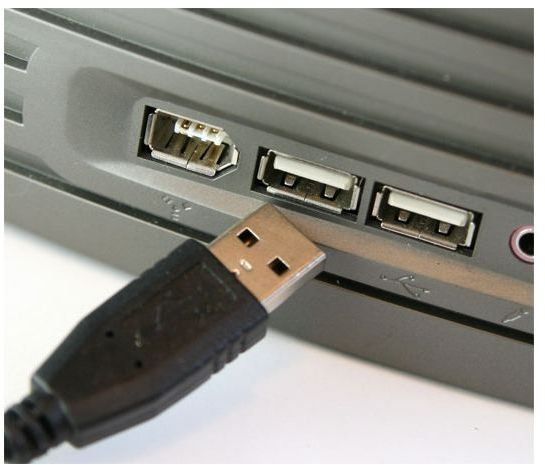USB Error: Troubleshooting USB Connection Problems
Examine USB Connections
USB connection errors are most often produced due to problems with the connections of USB wiring or USB connectors. When you receive a USB connection error, try disconnecting the cable from the USB port, and then re-connecting it. Loose, faulty connections prevent the operating system from recognizing the hardware properly when you try to connect it to your computer. So make sure that the connection is not loose or wobbly, coming out of the USB port.
Image Credit: microsoft.com
Download Latest Device Drivers
Computer hardware requires a driver (software) in order to communicate with the computer. Latest operating systems including XP, Vista and Windows 7 automatically install drivers for you when you connect hardware to your PC. Since the driver is simply a piece of software, it can become faulty, or by the passage of the time, it becomes outdated, due to which the device stops working or starts to give you connection or other USB errors. In that case the driver must be updated with the correct and latest drivers, so that the device may work properly, and smoothly.
Finding an updated driver for your hardware is not a difficult job. All you need to do is go to the hardware manufacturer’s website, and locate the download section to download the required driver. If you run Windows 7 on your computer, you can find a list of hardware vendors’ websites to download the latest drivers for your operating system, here.
Use Add New Hardware Option
If your operating system does not recognize your USB device, you can use the Windows Add Hardware option to add the device to the computer manually. Manually adding the device helps the operating system recognize and install the hardware that has been connected to your computer recently.

To add your USB device manually, go to Windows Control Panel (enter “control” (without quotes) in RUN, and hit Enter). When you are in the Control Panel, double-click Add Hardware, and the Add Hardware Wizard will open. Click next, and follow the on-screen instructions to add your USB device to your computer.
Disable Power Management
If you are having problems connecting and installing your USB device, try disabling the Windows Power Management option for USB devices, and then reconnect the device.
You can disable Power Management by opening the Windows Run window (Win key + R), and entering “devmgmt.msc” (without quotes). After this, hit Enter, and the Device Manager window will open. In the bottom of the window you will see Universal Serial Bus controllers, double-click on it to expand. On each USB Root Hub entry that appears under Universal Serial Bus, do a double-click, and the properties window will open. Go to the Power Management tab, and uncheck the option “Allow the computer to turn off this device to save power”. After doing this, click OK, close the Device Manager window and reconnect your USB device to see if your USB error has been fixed.
Check Manufacturer’s Website
If none of the above methods work for you, head to the manufacturer’s website and see if there are any troubleshooting tips available. Sometimes, problems that have occurred previously are thoroughly discussed on forums. If the website has a technical discussion forum, do check that out also. You can also find e-mail addresses for the technical support guys; you can discuss the USB error or connection problem directly with them, if you like.
Related Articles
Round Up of USB Powered Ethernet Hubs
References
Microsoft, www.microsoft.com
